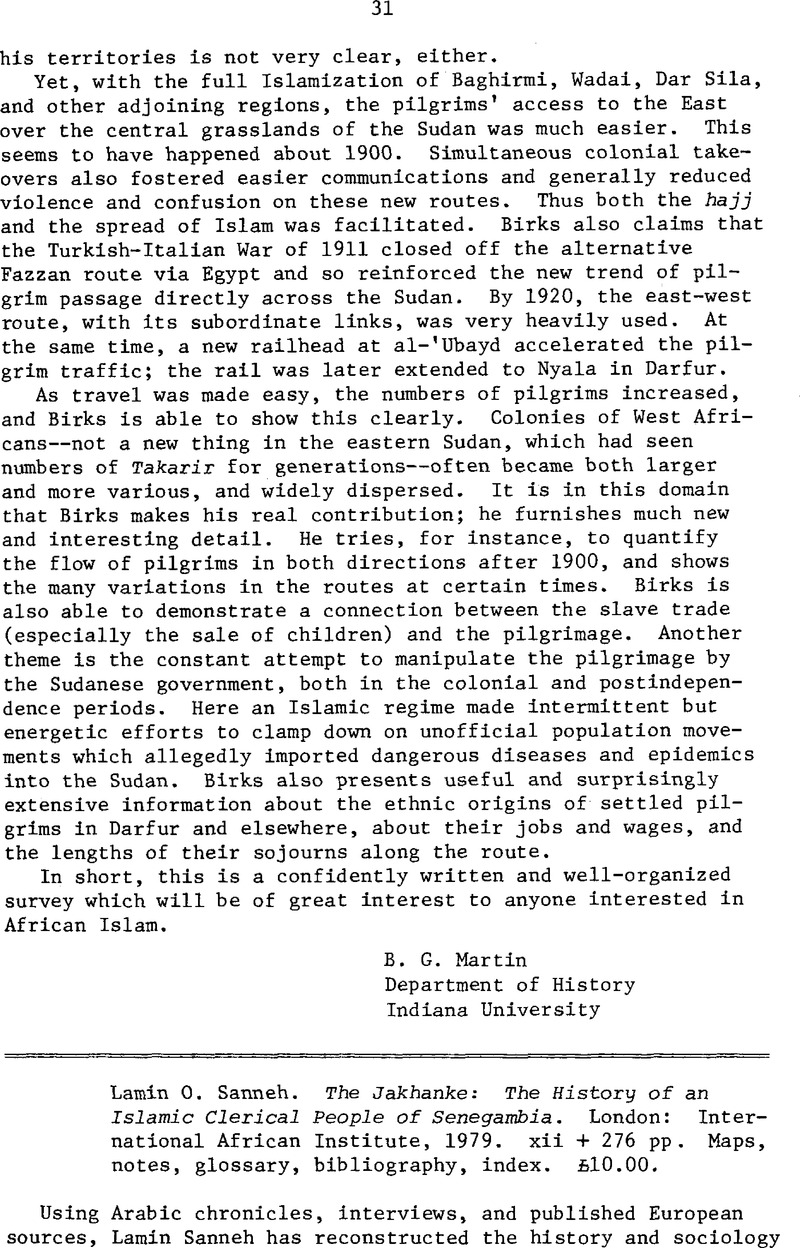No CrossRef data available.
Article contents
Lamin O. Sanneh. The Jakhanke: The History of an Islamic Clerical People of Senegambia. London: International African Institute, 1979. xii + 276 pp. Maps, notes, glossary, bibliography, index. £10.00.
Published online by Cambridge University Press: 23 June 2016
Abstract

- Type
- Islam and Christianity
- Information
- Copyright
- Copyright © African Studies Association 1980
References
1. “The Origins of Clericalism in West African Islam,” Journal of African History (1976): 49-72; and “Slavery, Islam and the Jakhanke People of West Africa,” Africa (1976): 80-97.
2. Wilks, I., “The Transmission of Islamic Learning in the Western Sudan,” in Goody, Jack, ed., Literacy in Traditional Societies (Cambridge: Cambridge University Press, 1968)Google Scholar; Curtin, Philip, “Precolonial Trading Networks and Traders: The Diakhanke,” in Meillassoux, Claude, ed., The Development of Trade and Markets in Pre-colonial West Africa (London: International African Institute, 1971)Google Scholar, and Economic Change in Precolonial Africa: Senegambia in the Era of the Slave Trade (Madison: University of Wisconsin Press, 1975, 2 vols.). Sanneh does not, however, make use of the work of Hunter, Thomas, for example, his article, “The Jabi Ta’rikhs: Their Significance in West African Islam,” International Journal of African Historical Studies 9, 3 (1976): 435–457 CrossRefGoogle Scholar.
3. In Meillassoux, Claude, ed., The Development of Trade and Markets in Pre-colonial West Africa (London: International African Institute, 1971)Google Scholar.




